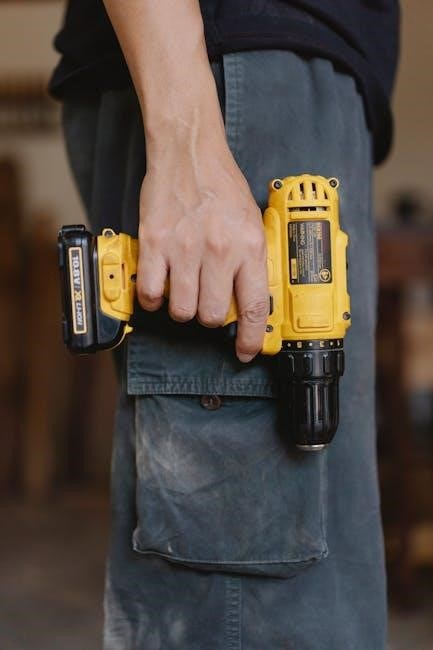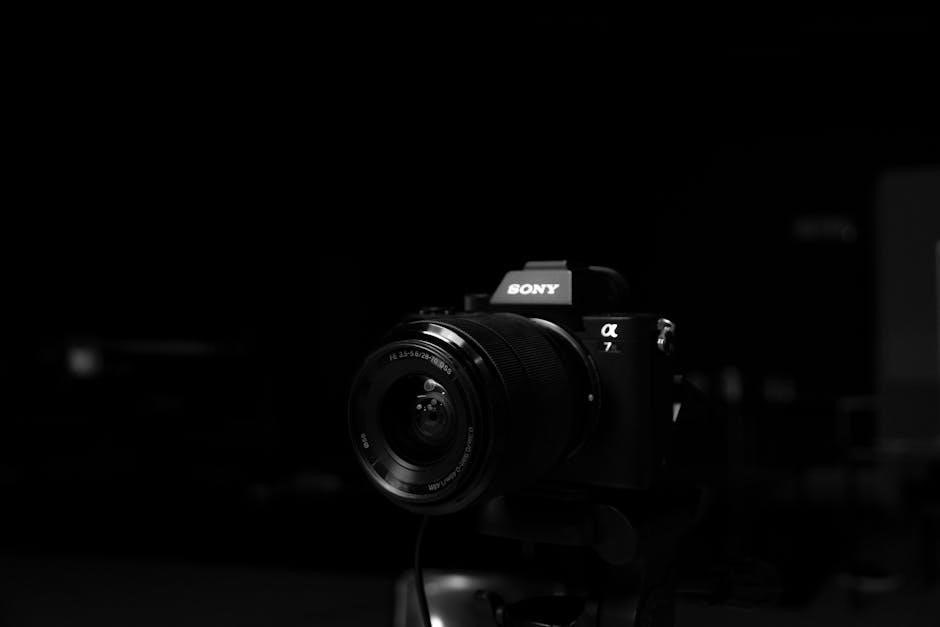Honeywell Pro 6000 Manual: A Comprehensive Guide
This detailed manual provides comprehensive instructions for the Honeywell Pro 6000, assisting users in installation, operation, and troubleshooting for optimal performance and smart home integration.
Welcome to the world of smart climate control! The Honeywell Pro 6000 thermostat represents a significant upgrade for your home’s heating and cooling system. Designed for ease of use and advanced functionality, this thermostat regulates coolant recirculation and radiator cooling, ensuring precise engine temperature maintenance. It’s an ideal solution for those seeking to modernize their home with smart technology.
This manual serves as your complete guide, walking you through every step – from unboxing and installation to programming and troubleshooting. Whether you’re a seasoned DIY enthusiast or a first-time thermostat installer, we’ve provided clear, concise instructions to ensure a smooth and successful setup. The Honeywell Pro 6000 offers a blend of comfort, convenience, and energy efficiency, allowing you to tailor your home’s climate to your exact preferences.
What’s Included in the Box?
Before beginning installation, carefully unpack your Honeywell Pro 6000 thermostat package and verify all components are present. You should find the Pro 6000 thermostat unit itself, designed for a modern aesthetic and intuitive operation. Included is the thermostat base, which will be mounted to the wall, providing a secure connection point.
Additionally, the box contains mounting screws and wall anchors for secure installation on various wall types. A wire label kit is provided to help you accurately identify and connect the wires from your HVAC system. You’ll also receive a detailed installation guide, offering step-by-step instructions and wiring diagrams. Finally, a quick start guide is included for a simplified setup process, ensuring you can quickly enjoy the benefits of your new smart thermostat.
System Compatibility & Requirements
The Honeywell Pro 6000 is designed for compatibility with most standard 24V heating and cooling systems, including furnaces, air conditioners, heat pumps, and boilers. However, it’s crucial to verify compatibility before installation. This thermostat does not support line voltage systems (110V/220V) or millivolt systems.
To ensure proper operation, your HVAC system must have a common (C) wire. If a C-wire is not present, a C-wire adapter may be required – sold separately. The Pro 6000 requires a stable Wi-Fi connection (2;4 GHz) for smart features and remote access. A neutral wire is not required for basic functionality, but is needed for optimal performance. Confirm your system meets these requirements for a seamless integration.

Installation Process
Proper installation of the Honeywell Pro 6000 involves careful wiring, secure mounting, and correct HVAC system connection, followed by a thorough initial setup procedure.
Wiring Diagrams & Color Codes
Understanding the wiring is crucial for a successful Honeywell Pro 6000 installation. This section details the specific wiring diagrams, clearly illustrating how to connect the thermostat to your existing HVAC system. Pay close attention to the color codes – typically, Red signifies 24V power, White connects to the heating wire, Yellow to cooling, and Green to the fan. However, variations exist!
Always consult the detailed wiring schematic included with your specific HVAC system and cross-reference it with the Pro 6000’s wiring guide. Incorrect wiring can damage both the thermostat and your HVAC equipment; Common terminal designations include Rh, Rc, W, Y, G, and C (common wire). The ‘C’ wire is often required for consistent power and may need to be added if not currently present. Double-check all connections before powering on to avoid short circuits or malfunctions. Safety first!
Mounting the Thermostat Base
Proper mounting ensures a secure and aesthetically pleasing installation of your Honeywell Pro 6000. Begin by carefully removing your old thermostat baseplate, labeling the wires as you disconnect them – this is vital! Use the included mounting screws and anchors to attach the Pro 6000 baseplate to the wall. Ensure the baseplate is level for accurate temperature readings and a professional appearance.
A small level is highly recommended during this step. Feed the labeled wires through the opening in the baseplate. Avoid pinching or damaging the wires during this process. The baseplate should be firmly secured to the wall, without wobbling. Once mounted, carefully connect the wires to the corresponding terminals, referencing the wiring diagram. Double-check all connections before proceeding to the next step.
Connecting to HVAC System
Carefully connect the labeled wires from your HVAC system to the corresponding terminals on the Honeywell Pro 6000 baseplate. Refer to the wiring diagram provided in this manual and online resources for accurate connections. Incorrect wiring can damage your HVAC equipment or the thermostat. Common terminals include Rh, Rc, W, Y, G, and C.
The ‘C’ wire (common wire) is often required for consistent power. If you don’t have a C wire, consult a qualified HVAC technician. Ensure each wire is securely inserted into its terminal. Gently tug on each wire to confirm a solid connection. Once all wires are connected, carefully snap the thermostat display unit onto the mounted baseplate. Double-check all connections before proceeding to power on the system.
Powering On & Initial Setup
After securely connecting the thermostat to your HVAC system and mounting the display, power on your HVAC system at the breaker. The Honeywell Pro 6000 should automatically power on and display the welcome screen. Follow the on-screen prompts to begin the initial setup process. This includes setting your location, date, and time.
The thermostat will then guide you through configuring your HVAC system type (e.g., forced air, heat pump). Select the appropriate settings based on your system. You may be prompted to name your thermostat for easy identification. Connect to your home’s Wi-Fi network to enable smart features and remote control. Create a Honeywell Home account if you don’t already have one.

Understanding the User Interface
The Honeywell Pro 6000 features an intuitive touchscreen display, offering easy navigation through menus, temperature adjustments, and scheduling options for convenient control.
Display Overview & Icons
The Honeywell Pro 6000’s display is designed for clarity and ease of use. The primary area showcases the current room temperature prominently, alongside the setpoint temperature. A mode indicator clearly displays whether the system is in Heat, Cool, Auto, or Off mode. Several icons provide at-a-glance information regarding system status.
A flame icon signifies active heating, while a snowflake indicates cooling is engaged. A fan icon denotes fan operation, and a Wi-Fi symbol confirms a successful network connection. Battery level is displayed with a corresponding icon, alerting users when replacement is needed. A schedule icon indicates that a programmed schedule is currently active.
Additional icons may appear to signal alerts, such as filter change reminders or system errors. Touching specific icons often provides more detailed information or access to related settings. The display’s backlight ensures visibility in various lighting conditions, enhancing user experience.
Navigating the Menu System
The Honeywell Pro 6000 utilizes an intuitive menu system, accessed via the touchscreen interface. The main menu is typically entered by pressing the “Menu” button, often represented by three horizontal lines. Within the main menu, options are organized into logical categories such as “Schedule,” “Settings,” “System,” and “Information.”
Users navigate through these options by swiping up or down on the touchscreen. Selecting a specific option usually involves tapping on its name. To return to the previous menu, a “Back” or “Return” button is generally available. The “Settings” menu allows customization of various parameters, including temperature units, display brightness, and Wi-Fi configuration.
The “System” menu provides access to advanced features and diagnostic information. Remember to save any changes made within the menu before exiting to ensure they are applied.
Adjusting Temperature Settings
The Honeywell Pro 6000 offers several methods for adjusting temperature settings. Directly on the main display, users can typically increase or decrease the setpoint temperature using the “Up” and “Down” arrow buttons, or by directly tapping the temperature value to input a desired number. The current operating mode – Heat, Cool, or Auto – is usually indicated on the screen.
Within the “Schedule” menu, temperature settings can be adjusted for different times of the day and days of the week, creating a customized comfort profile. Temporary overrides are also possible, allowing you to adjust the temperature for a specific duration without altering the programmed schedule.
Ensure the thermostat is in the correct mode before making adjustments. The display will clearly show the current setpoint and the actual room temperature.

Programming & Scheduling
Effectively manage your home’s climate with the Pro 6000’s scheduling features, allowing customized temperature settings for different times and days, optimizing comfort and efficiency.
Creating Custom Schedules
The Honeywell Pro 6000 empowers you to design personalized heating and cooling schedules, perfectly aligning with your lifestyle and maximizing energy savings. Begin by accessing the “Schedule” option within the thermostat’s menu system. You can then define distinct periods – such as “Wake,” “Leave,” “Return,” and “Sleep” – assigning specific temperatures to each.
For each period, meticulously set the start time and desired temperature. The Pro 6000 allows for unique schedules for weekdays and weekends, accommodating varying routines. Consider utilizing lower temperatures during unoccupied hours and overnight to significantly reduce energy consumption.
Furthermore, the thermostat supports multiple schedules, enabling tailored settings for different family members or zones within your home. Experiment with various configurations to discover the optimal balance between comfort and cost-effectiveness. Remember to save your schedule after making adjustments!
Setting Vacation Mode
The Honeywell Pro 6000’s Vacation Mode is designed to conserve energy while you’re away from home, preventing unnecessary heating or cooling. Access this feature through the main menu, typically labeled “Vacation” or “Away.” You’ll be prompted to enter the start date and duration of your absence.
During Vacation Mode, the thermostat maintains a pre-set, energy-efficient temperature, preventing pipes from freezing in winter or excessive heat buildup in summer. You can customize this “Vacation Hold” temperature to your preference.
The Pro 6000 also offers an option to resume your regular schedule automatically upon your return, eliminating the need for manual adjustments. Ensure Vacation Mode is activated before leaving, and consider testing it briefly to confirm proper functionality. This feature provides peace of mind and substantial savings.
Overriding Schedules Temporarily

The Honeywell Pro 6000 allows for temporary overrides of your programmed schedule, providing flexibility for unexpected changes in occupancy or comfort preferences. This can be achieved through the “Hold” function, accessible directly from the main display or within the scheduling menu.
You can select a temporary hold duration – options typically include 2, 4, or 8 hours, or a permanent hold until manually canceled. During a hold, the thermostat maintains the manually set temperature, disregarding the scheduled program.
To cancel a temporary hold and resume the regular schedule, navigate back to the scheduling menu and select “Cancel Hold” or a similar option. The Pro 6000 clearly indicates when a hold is active, often with a visual icon on the display. Utilizing temporary holds ensures comfort without disrupting your long-term energy-saving schedule.

Advanced Features & Settings
Explore sophisticated options like smart home connectivity, geofencing for automated adjustments, and energy optimization tools to maximize the Honeywell Pro 6000’s potential.
Smart Home Integration (if applicable)
The Honeywell Pro 6000 seamlessly integrates with popular smart home platforms, offering enhanced control and automation capabilities. Compatibility extends to systems like Amazon Alexa and Google Assistant, enabling voice command operation for temperature adjustments and scheduling.
Through these integrations, users can create customized routines, linking thermostat settings with other smart devices for a truly connected home experience. For instance, automatically lowering the temperature when leaving for work or adjusting it based on occupancy sensors.
The Honeywell Home app serves as a central hub, providing remote access and control from anywhere with an internet connection. This allows for convenient monitoring and adjustments, even when away from home, contributing to energy savings and enhanced comfort. Detailed setup instructions for each platform are available within the app and on the Honeywell Home support website.
Geofencing Capabilities (if applicable)
Leveraging the power of location services, the Honeywell Pro 6000 offers geofencing functionality through the Honeywell Home app. This intelligent feature automatically adjusts the thermostat based on your proximity to home, maximizing comfort and energy efficiency.
Users can define a virtual perimeter around their residence, triggering specific actions when entering or exiting this zone. For example, the thermostat can automatically pre-heat or pre-cool the home before arrival, ensuring a comfortable environment.
Conversely, when leaving, the system can switch to an energy-saving mode, reducing heating or cooling costs while the home is unoccupied. Geofencing requires enabling location permissions within the Honeywell Home app and configuring the desired radius and temperature settings. This feature provides a hands-free approach to climate control, adapting to your lifestyle seamlessly.
Energy Saving Tips & Optimization
Maximize your energy savings with the Honeywell Pro 6000 through strategic programming and utilization of its advanced features. Implement customized schedules aligning with your daily routines, reducing heating or cooling during unoccupied hours. Utilize the “Smart Response” function, which learns your home’s heating and cooling characteristics for faster temperature recovery.
Consider enabling geofencing (if applicable) to automatically adjust temperatures based on your location. Regularly clean air filters to ensure optimal HVAC system performance and efficiency. Explore the “Energy Report” within the Honeywell Home app to monitor usage patterns and identify potential areas for improvement.
Small adjustments, like lowering the temperature a few degrees in winter or raising it in summer, can yield significant savings. Regularly review and refine your schedule to adapt to seasonal changes and lifestyle adjustments, ensuring continuous optimization.

Troubleshooting Common Issues
This section details solutions for typical problems like power failures, connectivity disruptions, and inaccurate temperature readings, ensuring smooth operation of your Honeywell Pro 6000.
Thermostat Not Powering On
If your Honeywell Pro 6000 thermostat fails to power on, begin by verifying the power source. Ensure the HVAC system’s breaker hasn’t tripped and is securely reset. Check the thermostat wiring, confirming all connections are firm and correctly placed according to the wiring diagram – loose wires are a frequent cause.
Inspect the C-wire (common wire) connection; a missing or improperly connected C-wire is a common issue, especially in older systems. If your system lacks a C-wire, a C-wire adapter might be necessary.
Confirm the thermostat base is securely mounted and properly seated on the wall plate. If using batteries (for some models), replace them with fresh ones. Finally, attempt a system reset by briefly removing power to the thermostat to see if it resolves the issue. If problems persist, consult a qualified HVAC technician.
Connectivity Problems
Experiencing connectivity issues with your Honeywell Pro 6000? First, confirm your home Wi-Fi network is functioning correctly and that the thermostat is within range of the router. Verify the Wi-Fi password entered during setup is accurate – even a single incorrect character can prevent connection.
Restart both your router and the thermostat; this often resolves temporary network glitches. Check for firmware updates within the Honeywell Home app, as these frequently include connectivity improvements. Ensure no firewalls or security settings are blocking the thermostat’s access to the internet.
If using a dual-band router, try connecting the thermostat to the 2.4 GHz network, as it generally offers better range. If issues continue, consult the Honeywell Home support website for specific troubleshooting steps or contact their customer support team.
Incorrect Temperature Readings
If your Honeywell Pro 6000 displays inaccurate temperature readings, several factors could be at play. Ensure the thermostat isn’t directly exposed to sunlight, drafts, or heat sources like lamps, as these can skew the sensor readings. Verify the thermostat is mounted on an interior wall, away from exterior doors and windows.
Calibrate the temperature within the thermostat’s settings menu; a slight adjustment can often correct minor discrepancies. Confirm the thermostat’s location isn’t affected by poor air circulation. Check for obstructions blocking airflow around the device.
If the problem persists, a factory reset might resolve sensor calibration issues. If inaccuracies continue after resetting, contact Honeywell support for further assistance and potential hardware evaluation;

Maintenance & Care
Regular cleaning and occasional checks ensure optimal performance of your Honeywell Pro 6000. Proper care extends the lifespan and maintains accurate temperature control consistently.
Cleaning the Thermostat
Maintaining a clean thermostat is crucial for accurate readings and a polished appearance. Before cleaning, always ensure the system is powered off or set to ‘Off’ to prevent accidental adjustments or electrical hazards. Use a soft, dry microfiber cloth to gently wipe the thermostat’s faceplate and surrounding areas.
Avoid using abrasive cleaners, solvents, or excessive moisture, as these can damage the display or internal components. For stubborn smudges, lightly dampen the cloth with water, ensuring it’s wrung out thoroughly to prevent liquid from entering the device. Pay particular attention to cleaning around the buttons and display screen.
Regular dusting will prevent buildup and maintain optimal performance. Do not disassemble the thermostat for cleaning purposes; this could void the warranty and potentially cause damage. A clean thermostat contributes to a more responsive and reliable home comfort system.

Battery Replacement (if applicable)
If your Honeywell Pro 6000 model utilizes batteries, regular replacement is essential for uninterrupted operation. The thermostat will typically display a low battery warning when replacement is needed. Locate the battery compartment, usually found on the side or back of the unit, and carefully open it.
Remove the old batteries, noting the correct polarity (+ and -) as indicated inside the compartment. Insert new, high-quality alkaline batteries of the specified type – typically AA or AAA. Ensure they are properly aligned before closing the compartment securely.
After replacing the batteries, verify the thermostat powers on and displays correctly. Dispose of used batteries responsibly, following local regulations. Battery life varies depending on usage and settings; frequent schedule changes or smart home integrations may reduce battery duration.

Factory Reset Instructions
Performing a factory reset on your Honeywell Pro 6000 will restore all settings to their original, out-of-the-box configuration. This is useful for troubleshooting persistent issues or preparing the thermostat for a new installation. Please note: a factory reset will erase all personalized schedules, preferences, and smart home connections.
To initiate a reset, navigate to the thermostat’s menu system. Typically, this involves accessing the “Settings” or “Advanced” section. Locate the “Reset” or “Factory Reset” option and select it. You may be prompted to confirm your choice to prevent accidental resets.
The thermostat will then restart, returning to its initial setup screen. You will need to reconfigure all settings, including Wi-Fi connection, date/time, and programming schedules. Refer to the initial setup section of this manual for detailed guidance.